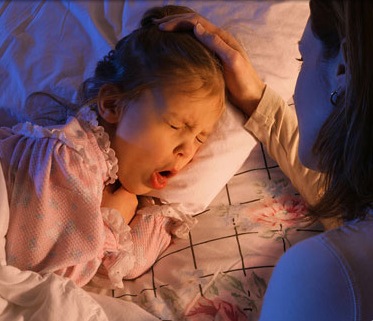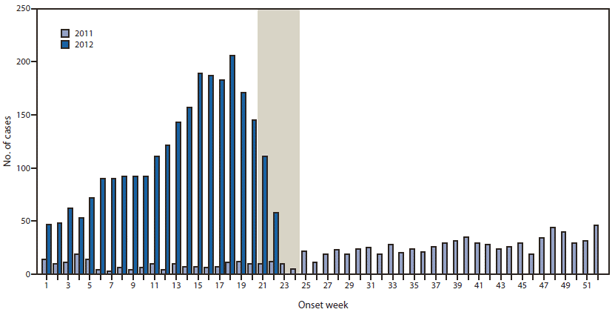
A new study by the Centers for Disease Control and Prevention (CDC) predicts that the prevalence of whooping cough infections in the United States will reach an all-time high by the end of 2012. The current year has already been host to 18,000 whooping cough outbreak cases, counting only those that have been reported to the CDC. Dr. Anne Schuchat, director of the National Center for Immunization and Respiratory Diseases within the CDC, said that only around 9,000 cases had been reported by this month in 2011. For the past five years running, fewer than 9,000 cases had been reported by this time of the year, as well.
Dr. Schuchat indicated that if whooping cough outbreak cases continue to appear at their current rate for the rest of the year, 2012 will end up breaking the whooping cough record that was set all the way back in 1959.
Cases Across the Country
Of all the states in the nation, Washington State has seen the most cases of whooping cough infections so far in 2012. Mary Selecky of the Washington State Department of Health said that 3,000 cases of whooping cough have been reported as of July. By comparison, just 200 cases of whooping cough had been reported by this time in 2011. Whooping cough prevalence in Washington State hasn’t been this pronounced since the early 1940s, according to Selecky.
In Washington, the age groups most affected by whooping cough in 2012 have included 10-year-olds, 13-year-olds and 14-year-olds. This is surprising given that most teens and preteens in Washington State received whooping cough booster vaccines just a few years ago, according to a report by the CDC.
Washington isn’t the only state in which young teens and preteens seem to be most at risk for whooping cough infection. The CDC report states that these age groups have been suffering from whooping cough at an above-normal rate in virtually all states of the nation.

Source: Morbidity and Mortality Weekly Report, U.S. Centers for Disease Control and Prevention.
Cause for a Change in Vaccination Protocols?
The CDC study indicates that the current whooping cough vaccine, accellular pertussis vaccine, only provides immunity for approximately three or four years. Certain groups, including the very young and very old, may be more vulnerable to whooping cough infection after immunity begins to fade than others.
Schuchat says that the CDC is examining the current whooping cough epidemic to determine whether the medical community should change its guidelines with regards to whooping cough vaccinations for both adults and children.
The whooping cough vaccine as it exists now originally came to market in 1997. The old whooping cough vaccine, known as the whole cell pertussis vaccine, came with side effects such as swelling in the site of injection and fever. Although the old version was considered less pure than the new one, it provided a longer period of immunity.
The CDC reminds readers of the report that despite the current epidemic, getting yourself vaccinated is still the best way to prevent a whooping cough infection.
The Importance of Vaccinations for Young Children
According to the CDC report, vaccinated children are eight times less likely to be infected with whooping cough than children that have not been vaccinated.
Of all age groups, infants are most susceptible to whooping cough infection. Infants receive DTaP vaccinations at 2, 4 and 6 months after birth, which protects them from diphtheria, tetanus and pertussis. Children receive a booster shot of the DTaP vaccine at roughly 18 months, and another booster shot years later when they’re between the ages of 4 and 6 years old.
A final booster shot, known as Tdap, is advised for preteens between the ages of 11 and 12. Individuals who are regularly in contact with infants and women who are pregnant are also advised to procure a Tdap booster shot. Unfortunately, only 8% of American adults received the Tdap shot in 2010.
The CDC report concluded by stating that a current focus of the medical community should be on increasing the percentage of individuals, particularly among those groups most susceptible to whooping cough, who are properly vaccinated.
Whooping Cough Outbreak: The Bottom Line
A new CDC report says that whooping cough infection rates are on track for an all-time high in 2012. Certain states, including Washington, are affected more heavily than others, though whooping cough prevalence is currently up in all states.
Getting yourself vaccinated is the best way to prevent a whooping cough outbreak, according to the CDC.
The full text of the CDC report can be found at their website.













